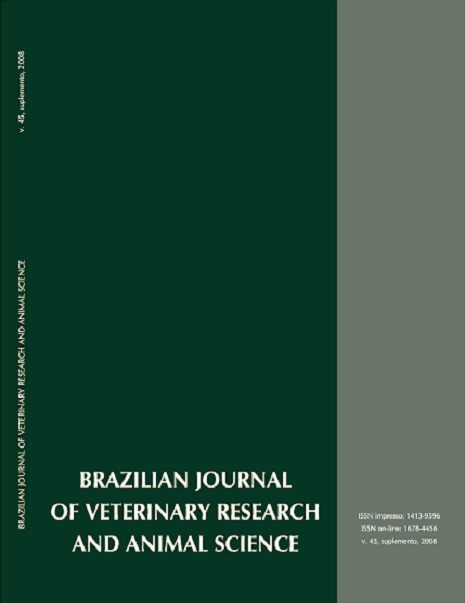Mammary gland of the rock cavy (Kerodon rupestris -Wied Neuwied, 1820): morphologic aspects
DOI:
https://doi.org/10.11606/S1413-95962008000700012Keywords:
Rock Cavy, Kerodon rupestris, Mammary glandAbstract
In attempt to collaborate with the rational zootecnic exploration of the Rock Cavy (Kerodon rupestris), the morphology of the mammary gland from these rodends was described, so that it can become a food source for northeastern population. Were used five animals yielded by the Center of Multiplication of Animals Savage (CEMAS), created by the Superior School of Agriculture of Mossoró (ESAM) registered in IBAMA as scientific breeding with number 12,492- 0004. The mammary glands were remove through dissecation and were photographed. Each animal presented two mammary glands in the base of the insertion of the pelvic members in the abdominal region. Histologicaly the mammary gland is composed of a great amount of lobes, replete of alveolar tubs glands with cubical simple epithelium. Its mammary papilla showed an amount of muscular staple fibres in circular way that assists it in the contraction for excrement of milk.Downloads
Download data is not yet available.
Downloads
Published
2008-12-01
Issue
Section
UNDEFINIED
License
The journal content is authorized under the Creative Commons BY-NC-SA license (summary of the license: https://
How to Cite
1.
Lima MC de, Bonatelli M, Oliveira MF de, Miglino MA, Goiozo PFI, Martins SMMK, et al. Mammary gland of the rock cavy (Kerodon rupestris -Wied Neuwied, 1820): morphologic aspects. Braz. J. Vet. Res. Anim. Sci. [Internet]. 2008 Dec. 1 [cited 2026 Jan. 2];45(supl.):88-93. Available from: https://revistas.usp.br/bjvras/article/view/26734





